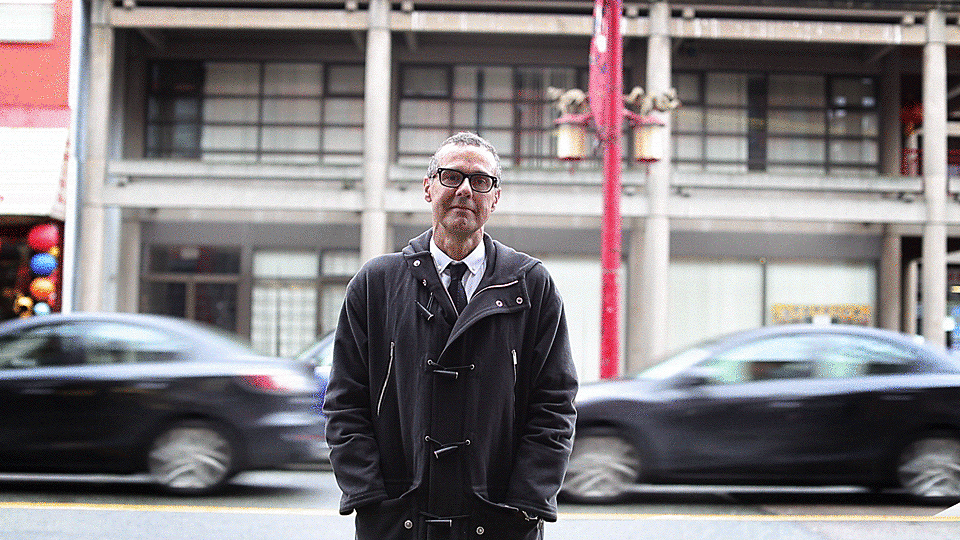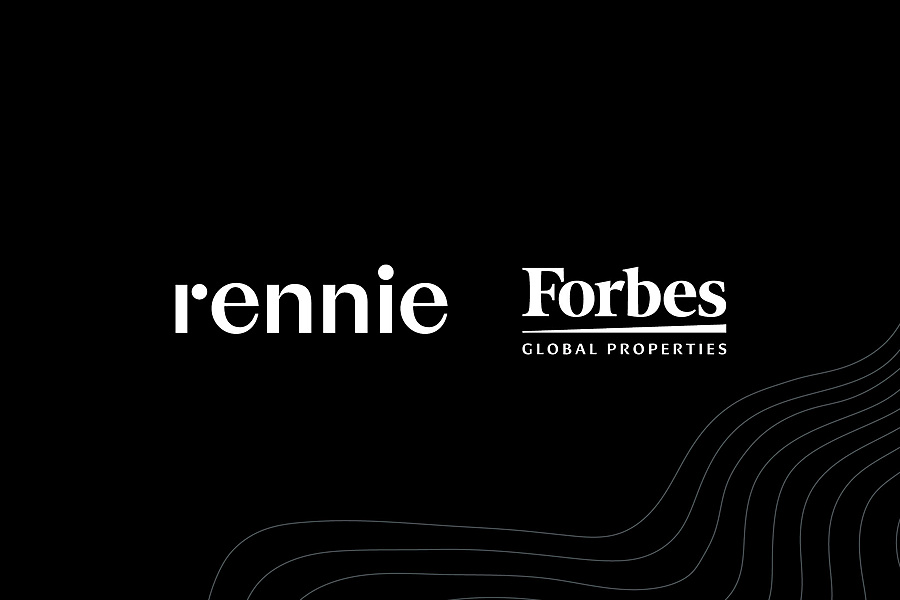The Globe and Mail
March 4, 2016
Written by: Marsha Lederman
In this series, The Globe and Mail partners with award-winning platform Wondereur to explore the diversity of contemporary art from a new perspective. The Globe and Wondereur approach radically different minds engaged in culture across the country and around the world. Each month, we ask them about the work of a contemporary Canadian artist who deeply touches them.
For this installment, Western Arts correspondent Marsha Lederman spoke with Bob Rennie – a Vancouver real estate marketer and contemporary-art collector whose collection includes more than 1,500 works by 47 artists. He opened his own museum, the rennie collection at Wing Sang, in 2009, he is chair of the Tate North American Acquisitions Committee, and also sits on the boards of the Art Institute of Chicago and Emily Carr University. A new exhibition at his museum deals with contemporary chaos – issues such as racism, gun violence and income inequality. It is the first time rennie has curated one of his own shows. The exhibition features nearly 60 works by more than 40 artists – including rennie’s chosen artist, Judy Chartrand, a contemporary Cree artist who was born in Kamloops, B.C., raised in Vancouver’s Downtown Eastside and now lives in Metro Vancouver.
You grew up in East Vancouver. Was there art in your home?
The art in our home was two large landscapes by Robert Wood in fake frames from Simpsons-Sears.
What was the first work of art you purchased?
The show that’s up now ends with the first piece I bought when I was 17: Norman Rockwell’s On Top of the World,[which depicts] a boy and girl sitting on top of the world that I felt was available to me, that utopian experience. The rest of the show shows the real world. I bought it during a trip to San Francisco; it was $375. That Norman Rockwell hung behind my dad’s La-Z-Boy rocker in our 800-square-foot, two-bedroom home. Norman Rockwell was cliché enough that everybody knew who it was, and we’d talk about it. And that’s what got me started.
Where did your art education come from?
I met Mieko, the mother of my children, in Grade 4. She was an artist. We used to go to the Vancouver School of Art on Saturdays. She would draw legitimately and I would throw paint off ladders and have fun. But the idea of collecting and art ownership fascinated me.
From what age?
We married at 19 and I was already buying everything Ken Danby did; the famous Canadian realist. I was buying prints and then I started to buy originals. I wanted to buy his egg tempera painting The Mannequin in 1973. It was $50,000. I couldn’t afford to buy it. It came for sale last year and I bought it for $28,000. I bought it for sentimental reasons; it’s not [part of] the [art] collection.
The work you collect now is a far cry from Ken Danby. How did you acquire your eye for contemporary art?
I was collecting with my ear. A rich uncle who was my accountant at the time said to me, “You should be looking at the Group of Seven.” And I bought an A.J. Casson that was owned by Sir Frederick Banting and then I bought Alex Colville. And although I respected these works, I was collecting with my ear. The Alex Colvillle was the most expensive painting I had bought to date; it was $105,000. It [depicted] Alex Colville in a Honda Civic kissing his wife goodbye with a black frame and it represented death to me. And then my father died and I sold it the next week. I just wanted it out of the home.
I wasn’t a collector; I had pieces in the home. And I slowly started to build confidence and decided that what really interested me were works with text in it: Barbara Kruger, Richard Prince, Andy Warhol. I bought Andy Warhol’s 10Soup Cans. And then I started to sell off the Group of Seven, gave one to a friend and gave away most of the Ken Danbys to the hospital, VGH. And then I slowly started to put together a collection; the text I let go, and I started to put together a collection that really dealt a lot more with identity and social commentary, social injustice, race and prejudice. And then as I was doing that I put together a photography collection, a sculpture collection, a painting collection.
So you went from collecting with your ear to … ?
I decided that if I collected with my heart, I probably was doing something safe with the money. In 2000, I sold Andy Warhol’s 10 Soup Cans for $75,000 and I bought a painting by Glenn Brown, a British painter, for $58,000. I was given 10 minutes to decide. I was at a dinner at the Tate for the Turner Prize; the dealer came over and said if you don’t buy it, that man sitting over there, a German dealer, he’s taking it. And [my life partner] Carey [Fouks] and I just said, “We’ll do it.” Came home, sold the Andy Warhol for $75,000. Within one year, the Warhol sold at auction for $497,000.
Yikes. How did that feel?
I love the [Glenn Brown] painting; it’s still one of the most important paintings in my collection. Today, 16 years later, the Warhols are probably worth $1.5-million and the Glenn Brown, $8-million.
Can you tell me about some recent acquisitions?
Something I bought the other day is Marco Perego Saldana’s 7142015 – 714 pairs of children’s shoes that represent the 714 children that are documented who died leaving Syria. And you cry when you look at the piece and the spaces between the shoes are the children that weren’t counted. That was a five-minute decision in his studio. The last thing we bought was Yoko Ono’s Mend Piece, a version of the same piece she did when she met John Lennon in 1966.
Any big regrets? The one that got away?
There was a time when I wanted a Roy Lichtenstein painting. But I don’t want trophies. We were offered The Clock by Christian Marclay and Carey said, “I think it’s really good,” and I said, “But Carey, it’s an artist we don’t collect.” It was $575,000. I said, “I can’t [decide] without spending some time.” And Carey said, “We’re going to have to decide right away.” [In hindsight] I think it’s a masterpiece. [But we didn’t buy it.] And then it just took off and took on a life of its own, where I bet two weeks later our museum wouldn’t have qualified. But that day we could have.
What was the thinking behind opening your own museum?
It started as an extension of our living room, where we entertain; it’ll just be for us. And then we thought, no; we have a duty to these artists to display it to the public. It was a 41/2-year build and we spent 12 times more than we ever thought we’d spend, but we love it. And we’ve agreed to keep it open until 2021 and see if it fits in with the landscape of Vancouver, does it fit in with the family financially and does it make us smile? We’ll do a full audit in 2021 and maybe turn the program upside down or just keep running it the way we do, with three shows a year, open to the public three days a week, fully self-funded. This is our 12th show. When I opened the gallery in 2009 with Mona Hatoum’s show, someone walked up to my son and said, “So your dad just pissed away all your money.” And my son said, “But he’s smiling.”
You make your money in real-estate marketing; I’m curious about the relationship between your job and your collection. Does one simply fund the other or are there other synergies at play?
I am so fortunate to be around people that think and cause me to think. What I learned really early is [when you’re] sitting with smart people, never pretend to know what you don’t know. They’re smart; not me. That’s the only way you can have a balanced conversation. So that creative thinking transfers over into real estate, where I’m not afraid to ask.
The artist you’ve chosen to talk about here is Judy Chartrand, who is also in your current show. Why did you choose her?
It’s the same reason that I put her in the show next to Ai Weiwei. His seven Han Dynasty vases, 1,800 years old, wiped out [with] industrial paint are something that the world recognizes, but Judy Chartrand’s bowls right next to it are of this place: five bowls that represent the Balmoral, the Dodson – Downtown Eastside hotels covered in cockroaches in beautiful luminescent paint. The bowls are beautiful but the undersides say, “If this is what you call ‘Being Civilized,’ I’d rather go back to being a ‘Savage.’” Ai Weiwei’s is a very loud international voice and Judy’s is a quiet regional voice.
Judy does not have an art dealer. She’s one of those artists who is under the radar and she deserves to have her voice heard. I think that Judy is a really good example where collecting crosses a lot more boundaries than just possession; that it offers a valid regional discussion on the Downtown Eastside. We have to solve these problems; we just have to. We have a responsibility and I think Judy moves that along. Will the collection carry that on? I hope. I’m [turning] 60, my children have no obligation to keep this art if I die tomorrow. When I’m 65 I’ll start to pick pieces to go to certain museums [and pieces] that must stay in the family. And by the time I’m 70 that should all be a doctrine that we’ll all live by. We have to be careful: Because I like bowling doesn’t mean my children have to be bowling. I want to be careful that they can celebrate the legacy of the collection without being burdened by it.



